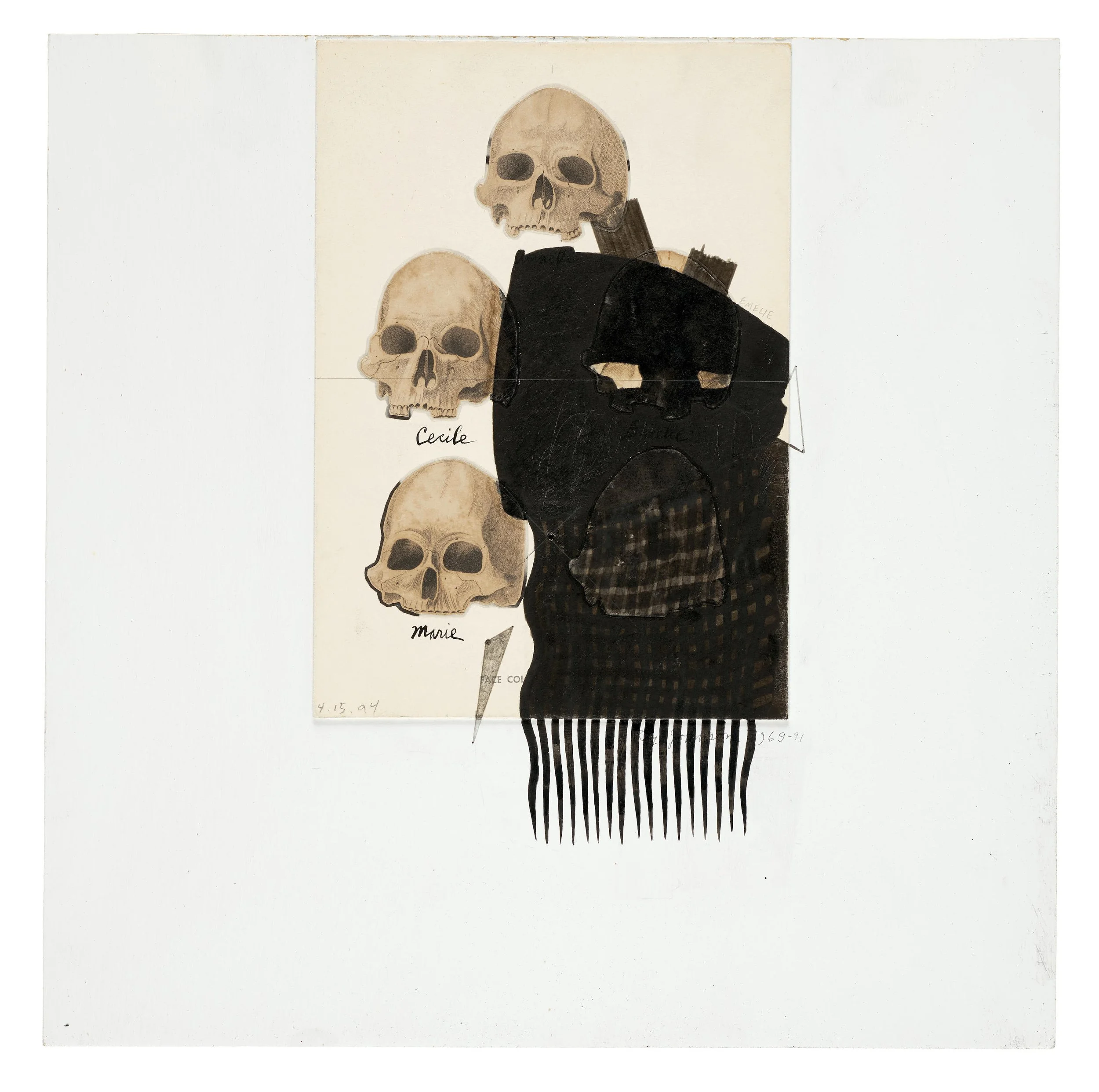
Dance of Death: Richard Harris' Macabre Collection Reveals Humanity's Fascination with Mortality
Thomas Hoepker (born 1936) ‘Andy Warhol, New York’ 1981 Archival pigment print,
All Images Courtesy of Bonhams
From Iconography to Imagination: Richard Harris' 'Dance of Death' Chronicles Humanity's Multifaceted Relationship with Mortality in Art

Jim Dine (born 1935) 'The Face in the Rage of Red' 1986

Carved Boxwood Memento Mori Figure, 17th/18th century, in the manner of Hans Leinberger (German, active 1511-1530)

Ray Johnson (1927-1995) Face Collage 1969-1994
In the realm of art and human fascination, death has long been a captivating subject—a relentless force that pushes us to confront the enigmatic nature of our own mortality. Richard Harris, a former antique print dealer with an exceptional passion for the iconography of death, left behind a legacy that transcends time and artistic genres. His collection, aptly named "Dance of Death," offers a profound visual exploration of our complex and contradictory attitudes towards the end of life. Join us on a journey through this extraordinary collection as we uncover the beauty and fragility of existence.
Richard Harris, a former antique print dealer with a profound passion for the iconography of death, vast collection comprises a diverse array of works in various mediums. He had a keen eye for capturing humanity's complex and contradictory attitudes towards death; the pressing nature of mortality, the universality of death, and the symbolism of life's end are at the core of this exceptional assemblage.
From Old Master vanitas paintings by the likes of Jan Brueghel the Younger and Adriaen van Utrecht to modern and contemporary works by Robert Mapplethorpe, Jim Dine, and Irving Penn, "Dance of Death" transcends time and artistic genres. It's a visual exploration of the ever-present contemplation of death, as interpreted through the hands of masterful artists.
Harris embarked on his quest to assemble this unique trove around 2001, with a special focus on symbolic representations of death. He once expressed, "I think that everyone ought—not to be obsessed by the fact of death, but be aware of the fact that dying is a part of living." This statement encapsulates the essence of the collection. It's not about glorifying death but recognizing its inescapable role in the human experience.

Arnold Newman (1918-2006) 'Jackson Pollock', 1949

Pavel Tchelitchew (1898-1957) 'The Living Shell' signed and dated 'P Tchelitchew '44'

Irving Penn (1917-2009) 'Ospedale', 1980 Platinum Palladium print, printed in 1981
In "Dance of Death," viewers will encounter death in its multifaceted manifestations. From the medieval 'Danse Macabre,' which emerged during times of plague, famine, and war, to the entwined skeletons gracefully dancing through Tibetan art, death assumes a myriad of forms. It can be triumphant, benign, or contemplative. Death scythes through fin-de-siècle engravings, plays a violin, and interlaces with lovers in a haunting embrace, reflecting the eerie allure of its proximity.
The collection also delves into the unsettling realm of art that marries chaos, brutality, and aesthetic beauty. It navigates the human fascination with the outer limits of life and death, the intertwining of sexuality and pain. Voluptuous nudes juxtaposed with cadavers, Death interrupting lovers' embraces, proud anatomists posing with flayed corpses, and amorous couples morphed into grinning skulls all explore the morbid thrill of death's proximity.
But "Dance of Death" is not just an exploration of morbidity; it's a celebration of our enduring fascination with life and death. Ground-breaking anatomical studies cut across the lines of desire, death, and knowledge, expressing the very human desire to connect with our ancestors and sanctify the body. This collection is an extended visual essay on our dealings with death, across cultures and spiritual traditions.
Harris himself envisioned his collection as more than a personal statement. He aimed to share it with the public, sparking a profound conversation about the subject of death that our society often avoids. In his words, "It is my wish that what started out solely as a collection of objects based on the theme of Death will become the visual component for a more serious conversation about the subject of death that we need to have in our society."
Richard Harris' "Dance of Death" collection is not for the faint of heart, but it is a testament to our enduring fascination with life's most enigmatic certainty. It offers a unique opportunity to contemplate death, mortality, and the ways in which artists throughout history have sought to grapple with the inescapable end.

“This extraordinary collection challenges us to look into the abyss and, in doing so, to better understand the beauty and fragility of life itself.”
George C. Haggenbottom 'Thread of Life', c. 1948 Gelatin silver print; mounted, signed and titled in pencil
